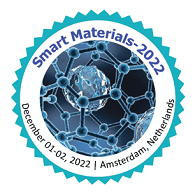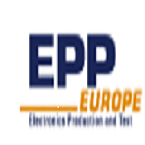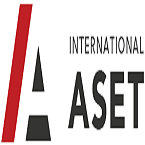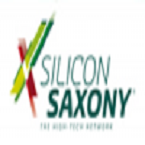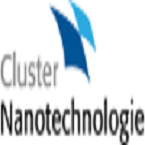About Conference
Smart Materials-2022 welcomes all attendees, presenters, and exhibitors from all over the world to Participate at upcoming physically Events and We are glad to invite you all to attend and register for “42nd Global Conference on Smart Materials and Nanotechnology” which is going to be held during December 01-02, 2022 Amsterdam, Netherlands and the Theme of Smart Materials-2022 is to “Emerging Trends in the Fields of Smart Materials and Nanotechnology”
Conference series LLC LTD organizes about over 1000 Global Events which are inclusive of the 400+ Conferences, 300+ Workshops and about 300+ Symposiums every year throughout the world across Asia-Pacific, Europe, & USA with the support of over 1000 scientific societies, while having already published about more than 500 open access journals containing over 50,000 eminent and reputed scientists as editorial board members.
The interdisciplinary field of smart materials, also commonly termed Smart materials science and engineering, covers the design and discovery of new materials, particularly solids. The intellectual origins of materials science stem from the Enlightenment, when researchers began to use analytical thinking from chemistry, physics, and engineering to understand ancient, phenomenological observations in metallurgy and mineralogy. Materials science still incorporates elements of physics, chemistry, and engineering. As such, the field was long considered by academic institutions as a sub-field of these related fields. Beginning in the 1940s, materials science began to be more widely recognized as a specific and distinct field of science and engineering, and major technical universities around the world created dedicated schools for its study.
Materials scientists emphasize understanding, how the history of a material (processing) influences its structure, and thus the material's properties and performance. The understanding of processing-structure-properties relationships is called the materials paradigm. This paradigm is used to advance understanding in a variety of research areas, including nanotechnology, biomaterials and metallurgy.
Materials science is also an important part of forensic engineering and failure analysis – investigating materials, products, structures or components, which fail or do not function as intended, causing personal injury or damage to property. Such investigations are key to understanding, for example, the causes of various aviation accidents and incidents.
Scientific Sessions
Track 1: Nanotechnology
Nanotechnology refers to the department of technology and engineering committed to designing, producing, and the use of structures, devices, and systems through manipulating atoms and molecules at nanoscale, i.E. Having one or extra dimensions of the order of one hundred nanometres (one hundred millionth of a millimetre) or much less. In the natural global, there are numerous examples of systems with one or more nanometre dimensions, and lots of technologies have incidentally concerned such nanostructures for decades, however simplest recently has it been feasible to do it deliberately. Many of the applications of nanotechnology contain new materials which have very distinctive homes and new effects compared to the same substances made at larger sizes. This is due to the very high surface to extent ratio of nanoparticles compared to larger debris, and to consequences that seem at that small scale however aren't discovered at large scales.
Track 2: Nanotechnology & Advanced Materials
A natural, incidental or manufactured cloth containing particles, in an unbound kingdom or as an mixture or as an agglomerate and where, for fifty % or extra of the debris within the variety size distribution, one or greater outside dimensions is inside the length range 1 nm - one hundred nm. Advanced Materials are a first-rate subject of research in academia. They consist of all substances engineered to deliver unique physical and/or practical houses of their application. The trend with all steel, ceramic, polymer and composite materials is to achieve stepped forward competencies such as power, longevity, durability and other beneficial capability via designing it in on the nanoscale and harnessing the ones houses in huge systems. The shape and properties of superior materials on the ‘nano’ scale (i.E. One millionth of a millimetre) is now nicely understood. This is leading to the task of producing advanced substances to recognize capabilities in bulk systems. This is termed nano-engineering and these materials are called nanomaterials. The research and commercialisation of nanomaterials will retain to boost up and we assume that huge scale systems with increasingly refined and dependable houses can be in use.
Track 3: Medical Nanotechnology in Cancer Therapy
Nanotechnology has been drastically studied and exploited for cancer treatment as nanoparticles can play a sizeable position as a drug shipping device. Compared to standard pills, nanoparticle-based drug shipping has particular benefits, which includes progressed balance and biocompatibility, improved permeability and retention effect, and specific focused on. The utility and improvement of hybrid nanoparticles, which includes the mixed houses of different nanoparticles, has led this type of drug-service device to the subsequent degree. In addition, nanoparticle-primarily based drug transport structures have been shown to play a role in overcoming cancer-related drug resistance. The mechanisms of most cancers drug resistance encompass overexpression of drug efflux transporters, faulty apoptotic pathways, and hypoxic environment. Nanoparticles concentrated on these mechanisms can result in an development in the reversal of multidrug resistance. Furthermore, as more tumor drug resistance mechanisms are found out, nanoparticles are increasingly more being advanced to goal those mechanisms.
Track 4: Smart Therapeutic Nano systems
The clever drug delivery gadget is applied for dispensing tablets to the recipient. Biological facts detected by biological sensors is investigated and the drug transport machine is stimulated to supply the drug primarily based facts. Technology based drug pumps, micro-pumps, micro-needles, micro-osmotic pumps, and Nano pumps are utilized for smarter drug transport. Therapeutic systems are to optimize motion by transporting drug rendering to a therapeutically rational software that would pick out expected movements from a range of attention structured movements. Nano structures are distinctive practical structures deliberate at the Nano scale and are comprised of characteristic physicochemical properties with huge visions within the diagnostic applications and therapeutics, starting from transport hundreds to biosensors. Smart Nano systems have the viable to supply customized healing scheme and diagnostic.
Track 5: Pharmaceutical Nanotechnology
Pharmaceutical Nanotechnology deals with emerging advanced technology for setting up customized solutions for drug delivery systems. The drug transport device genuinely influences the price of absorption, distribution, metabolism, and excretion of the drug or other associated chemical substances in the body. In extension to this the drug shipping gadget also permits the drug to bind to its target receptor and affect that receptor’s signalling and interest.
-
Chemical technological know-how
-
Biological assessment
-
Toxicological assessment of nanomaterial
Track 6: Nano medicine and Nanotechnology
Nano medicinal drug pursues to convey a precious set of research gear and clinically useful devices in the destiny. Nano medication is a medical application of nanotechnology. Nano medication stages from the scientific applications of nanomaterial and biosensors, organic gadgets and capability upcoming applications of molecular nanotechnology. Nano medication fights for bringing valued set of have a look at equipment & clinically useful devices that's greater tremendous to the society. Nano biotechnology may be able to generate numerous novel materials and gadgets with a large variety of packages which include medication, biomaterials and strength manufacturing.
Track 7: Pharmaceutical Microbiology & Drug Safety
Pharmaceutical microbiologists are liable for ensuring that the supply of life-saving tablets and vaccines are unfastened from microorganism infection. By preserving product safety and excellent with dependable microbial checking out, the downtime of manufacturing and delay in deliveries can be minimized, whilst making sure regulatory compliance. Pharmaceutical agencies require microbial identity no longer only for production line manipulate, but additionally for sterile merchandise which includes vaccines. Pharmaceutical microbiologists have a responsibility to ensure efficient production and production manage, and to relaxed products are secure and unfastened from contaminants. When a superb culture is detected in a sample along the pharmaceutical procedure chain, for instance in raw materials, an quit product or in the manufacturing surroundings, identity of the cultured microorganism is required. This ensures finished product sterility and, in the long run, patient protection.
Track 8: Nanotechnology in Energy
Nanotechnologies offer the ability to enhance electricity efficiency across all branches of enterprise and to economically leverage renewable strength production via new technological answers and optimized manufacturing technology. Nanotechnologies provide critical development potentials for the improvement of each conventional power resources (fossil and nuclear fuels) and renewable electricity resources like geothermal energy, sun, wind, water, tides or biomass. Nano-lined, put on resistant drill probes, as an instance, permit the optimization of lifespan and performance of systems for the improvement of oil and natural gasoline deposits or geothermal energy and thus the saving of costs. Further examples are excessive-duty nanomaterials for lighter and extra rugged rotor blades of wind and tidepower flora as well as wear and corrosion safety layers for routinely stressed components (bearings, equipment boxes, and so on.). Nanotechnologies will play a decisive position specially in the intensified use of solar power thru photovoltaic systems. In case of traditional crystalline silicon sun cells, as an instance, will increase in efficiency are achievable by using antireflection layers for better mild yield.
Track 9: Nanotechnology in Polymers
In the huge discipline of nanotechnology, polymer matrix based nanocomposites have end up a distinguished place of present day research and development. Exfoliated clay-based totally nanocomposites have dominated the polymer literature but there are a massive number of other great regions of modern and rising interest. This review will detail the era involved with exfoliated clay-based totally nanocomposites and also encompass other vital regions together with barrier houses, flammability resistance, biomedical packages, electrical/electronic/optoelectronic applications and gas cell pastimes. The crucial query of the “nano-impact” of nanoparticle or fiber inclusion relative to their larger scale opposite numbers is addressed relative to crystallization and glass transition conduct. Of course, other polymer (and composite)-primarily based homes derive blessings from nanoscale filler or fiber addition and these are addressed.
Track 10: Cancer and Nanotechnology
Modern medication has been waging a struggle on cancer for nearly a century with no tangible lead to sight. Cancer treatments have extensively improved, but the want to growth specificity and reduce systemic toxicities remains. Early analysis holds a key to improving prognostic outlook and patient fine of life, and diagnostic equipment are on the cusp of a technological revolution. Nanotechnology has step by step expanded into the reaches of most cancers chemotherapy, radiotherapy, diagnostics, and imaging, demonstrating the ability to enhance each and enhance patient care. Nanomaterials provide an abundance of versatility, capability, and programs to engineer in particular centered most cancers remedy, correct early-detection devices, sturdy imaging modalities, and improved radiotherapy adjuvants. This evaluation provides insights into the present day medical and pre-scientific nanotechnological programs for cancer drug remedy, diagnostics, imaging, and radiation remedy.
Track 11: Nano toxicology
Nanotoxicology specifically deals with the toxicity of nanomaterials/nanoparticles. The essential aim of nanotoxicological studies is to determine the toxic/unsafe effects of nanoparticles and nanopharmaceuticals on people and environment. Typical nanoparticles which have been widely studied in unique toxicological research are silver (Ag-NPs), gold (Au-NPs), titanium dioxide (TiO2-NPs), cesium dioxide, iron oxide, alumina, zinc oxide (ZnO-NPs), carbon black (CB), and diesel exhausted nanoparticles, in addition to carbon nanotubes, fullerenes, and “nano-C60” (Khalili Fard et al., 2015; Azhdarzadeh et al., 2015). Because of quantum size effects and massive surface area-to-volume ratio, nanomaterials have unique properties, in comparison with their large counterparts. The toxicity of nanoparticles may not be seen with larger debris that encompass the equal material or detail. Nanomaterials, even fabricated from inert factors (such as gold) can come to be particularly active at the nanometer dimensions (Khalili Fard et al., 2015; Azhdarzadeh et al., 2015).
Track 12: Nano biotechnology
Nanobiotechnology is the utility of nanotechnologies in biological fields. Chemists, physicists and biologists each view nanotechnology as a branch in their own concern, and collaborations in which they every make a contribution similarly are commonplace. One result is the hybrid discipline of nanobiotechnology that uses organic beginning materials, biological design standards or has organic or clinical applications. While biotechnology deals with metabolic and different physiological strategies of biological subjects including microorganisms, in aggregate with nanotechnology, nanobiotechnology can play a crucial position in growing and imposing many useful equipment inside the examine of life. Although the combination of nanomaterials with biology has caused the improvement of diagnostic gadgets, contrast marketers, analytical equipment, therapy, and drug-delivery cars, bionanotechnology research continues to be in its infancy.
Track 13: Applications of Nanotechnology
The packages of nanotechnology, typically comprise industrial, medicinal, and electricity uses. These encompass extra durable creation materials, therapeutic drug delivery, and better density hydrogen gas cells which are environmentally pleasant. Bein that nanoparticles and nanodevices are incredibly versatile via amendment of their physiochemical residences, they have observed makes use of in nanoscale electronics, most cancers treatments, vaccines, hydrogen gas cells, and nanographene batteries.
Track 14: Bio-hybrid polymer Nano fibers
Advanced techniques for the education of nanofibers, core shell fibers, hollow fibers, and rods and tubes from natural and synthetic polymers with diameters down to 3 nanometers have recently been hooked up. These strategies, among them electro- and co-electrospinning and unique template strategies, permit the incorporation now not best of semiconductor or catalytic nanoparticles or chromophores however also enzymes, proteins, microorganism, and so on., immediately throughout the preparation manner into these nanostructures in a very gentle way. One specific gain is that organic objects together with, as an instance, proteins may be immobilized in a fluid environment within those polymer-based nano-items in this kind of manner that they maintain their native conformation and the corresponding functions. The variety of programs of such biohybrid nanosystems is extremely large, as an instance, within the areas of biosensorics, catalysis, drug transport, or optoelectronics.
Track 15: Nanotechnology in Water Treatment
Important challenges inside the international water state of affairs, in particular attributable to international population increase and climate trade, require novel progressive water technologies which will make sure a supply of drinking water and reduce global water pollution. Against this history, the variation of quite superior nanotechnology to conventional system engineering offers new possibilities in technological trends for advanced water and wastewater generation processes. Here, a top level view of latest advances in nanotechnologies for water and wastewater remedy processes is furnished, inclusive of nanobased materials, including nanoadsorbents, nanometals, nanomembranes, and photocatalysts. The useful properties of those materials in addition to technical boundaries when in comparison with conventional processes are mentioned. The country of commercialization is supplied and an outlook on in addition studies opportunities is given for each type of nanobased fabric and system. In addition to the promising technological upgrades, the limitations of nanotechnology for water packages, consisting of legal guidelines and regulations in addition to ability fitness risks, are summarized. The felony framework in keeping with nanoengineered materials and methods which are used for water and wastewater treatment is considered for European nations and for the USA.
Market Analysis
The global smart materials market size was valued at USD 32.77 billion in 2016 and is expected to experience robust growth at a CAGR of 13.5% from 2017 to 2025. They exhibit responsiveness in a controlled manner to changing environments. They have a molecular structure, which allows them to respond to a wide array of external stimuli, such as electric fields, magnetic fields, pressure, temperature, moisture, and chemicals.
Rising demand for sensors and actuators in consumer electronics, aerospace & defense, and consumer goods have propelled the demand. Various U.S.-based organizations such as The National Science Foundation (NSF) and the Defense Advanced Research Projects Agency (DARPA) have encouraged research programs to promote commercial and industrial usage of smart materials. DARPA has funded various research activities to evaluate the application potential of the product in the defense sector.
The new generation materials, with inherent intelligence, exhibit adaptive capabilities in response to specific stimulus input. They change their physical properties such as shape, stiffness, and viscosity in a specific manner. Multiple functionalities such as self-adaptability, self-sensing, self-healing, and memory enable their usage in numerous applications.
Piezoelectric materials accounted for the largest share of the global industry, among products, accounting for 54% share of the revenues in 2016. Mechanical deformations or stress can induce electric dipoles in these materials, which generates electricity. Piezoelectricity can be generated by different sources, including naturally-occurring crystals and synthetic crystals. The growing demand for piezoelectric devices in various end-user industries, including aerospace & defense, automotive, healthcare, information, communication, and manufacturing industries, has propelled the smart materials market demand.







